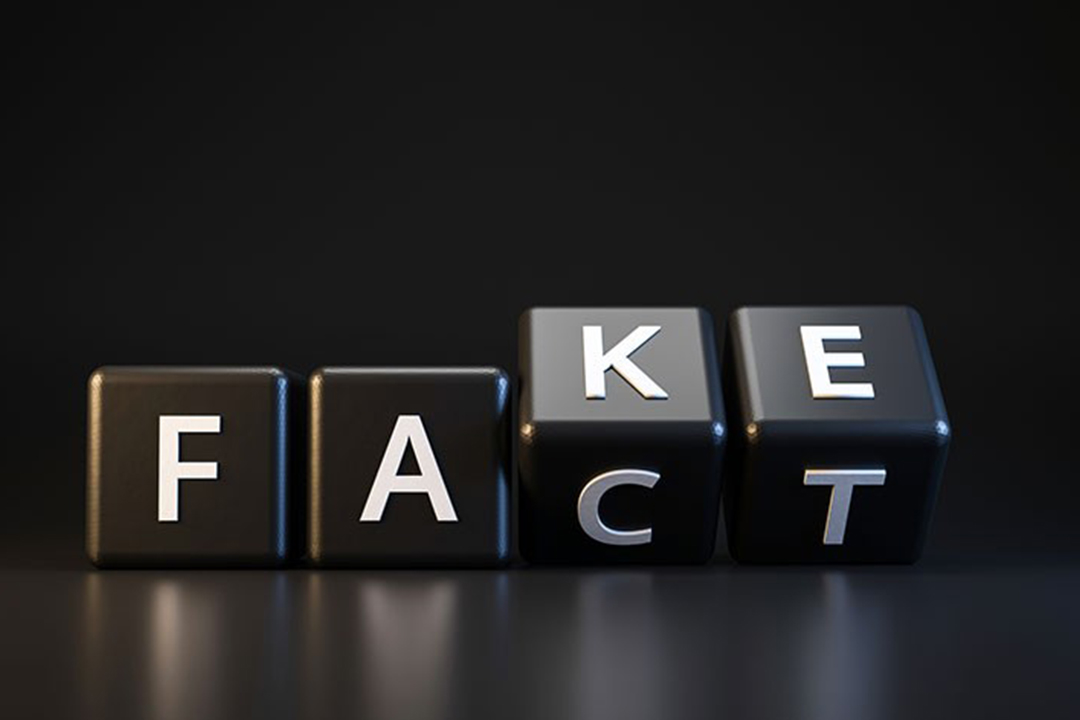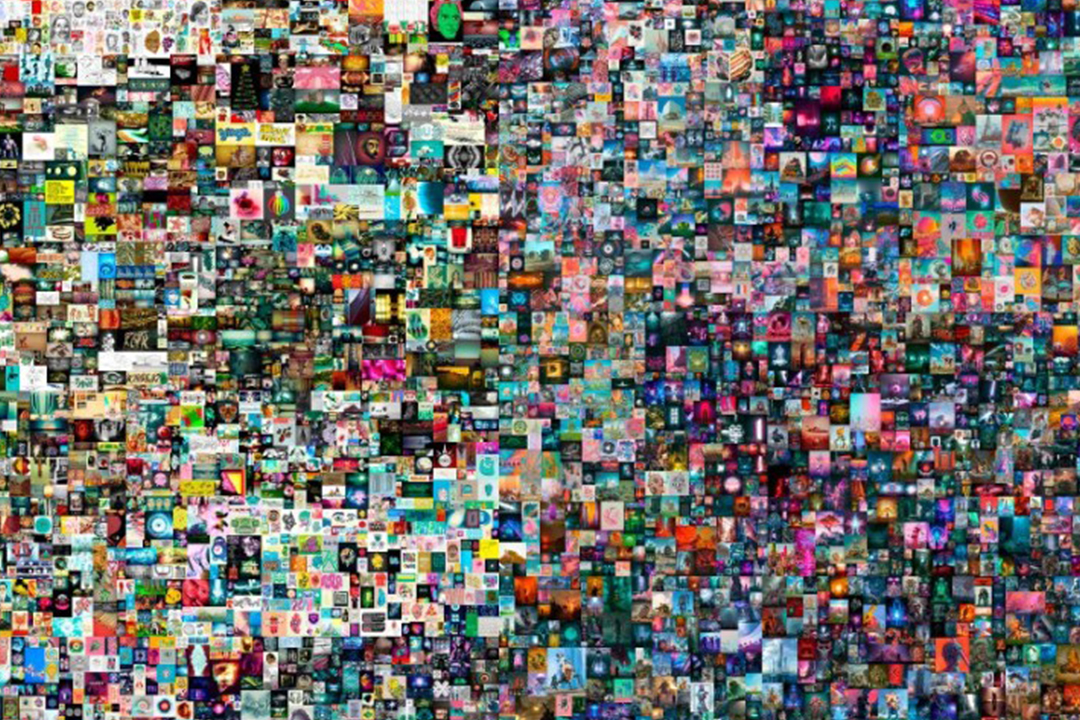The Hustle may be great, but nothing permanent can be built on a foundation of deceit.
Continue reading$69.3 million for that?
Vignesh Sundaresan bought art from Mike Winkleman. This statement sounds a bit dry, doesn’t it ?. Ok, Let me rephrase it. Metkovan, the Cryptocurrency mogul, bought an NFT from Beeple for a whopping 69 Million USD.
This work of art, a series called “Everydays: The first 5000 days “, isn’t a physical work of art, it is digital. Artist Mike Winkleman created a single piece of art every day, for over a decade, and then put the 5000 together. Christie’s sold the NFT (non-fungible token) to Vignesh Sundaresan, who goes by Metkovan. The piece itself is freely available for everyone to view, I have used it here, but the rights belong only to the buyer.
This is the first time a digital work of art has commanded a price similar to world-renowned works from famous artists. Predictably all three parties, the buyer, the artist, and Christie’s ( the auction house)are over the moon. But for the rest of us, some questions arise. I am sharing some of mine, I look forward to hearing your take.
Firstly, there are the changing parameters of what “Art” means. Ok, let me make it clear, I am not a Luddite who believes art needs physicality or to occupy space, And yes I also agree that art is constantly evolving and changing. . But what about art which takes years to master, or hasn’t got a convenient NFT. Eg: Performative art. How does that break through the digital barrier and realize its true worth ?.
Secondly, For years the most celebrated art has been that whose value cannot be calculated. eg: whats the monetary value of the Monalisa or La pieta ?. There’s no real way to calculate the feelings they evoke. But all that has now changed in fell stroke. The value of Art may not need any gatekeepers or judgment, which is not a bad thing.
Thirdly, Has the nature of capital Changed? Has money stopped being the way to show you’ve arrived ?. Let me explain The patrons of art have always been part of a rarefied circle, uber-wealthy and influential, in the middle ages it was the church and royal houses. In the late 19th century it was oil-sheiks & media barons, tech millionaires, etc. This sale demonstrates that cryptocurrency has arrived, and is ready to party.
I see both positive and negative fallouts. On a positive note, this will democratize artistry and patronage. Art will become more accessible, will reflect a wider worldview, and problems like fakes can be avoided. On a not-so-positive note, traditional wealth creation has norms, established practices, not so crypto. So who determines what kind of money will be poured into digital art? who backs it or stands guarantee for its real-world value?. Also, given its subjective nature, what’s to prevent scores of shady people from selling worthless digital art NFT’s to move money across geographies, bypassing regulatory norms ?.
Now the most important question, dear reader, you may ask, how does impact our lives? well, I am a marketer, and on the face of it, this is interesting but not central to life. But it does open new avenues. For eg: Should I structure my upcoming book, on these lines? Make it available in public and get compensated in crypto? Albums are being released this way, why not books? Or should I follow the traditional way of publishing ?. Going forward, all of us will need to figure out how to maximize output from our efforts and this seems to be a great starting point,
Whether in the future any valuable commodity, that thrives on scarcity can be controlled using NFT eg: Land records, Jewellery, collectables, and other high-end purchases, or NFT’s and Cryptocurrency would turn out to be a flash in a pan. Time alone will tell.
Ps: I look forward to hearing your take in the comments/ DM. Else email me at rashmi@altiusconsults.com
PPS: If you wish to learn more about the art itself, and the buyer. I am sharing links in the first comment.
In Pursuit of Trivia: Waiting to quiz again.
On March 15, 2020, exactly a year ago, Maj. Chandrakant Nair, one of India’s well-known quiz masters, told the participants (as a joke) they should make the most of quizzing now, as no one knows when live quizzes would happen again. Surprisingly, lockdown 2020 has been a boon for Indian quizzing. Online tools like Zoom & Discord would ensure a boom in quizzing over the next year, reminding one of the days when Quiz time aired on Doordarshan, kids in India, we learned this new game.
In India, quizzing is not a mainstream sport. Most people think of quizzes either as a pastime for school and college students or fodder for popular television series like KBC ( plus its regional variants).
However, open quizzing is a small strong sub-culture, with its superstars, rivalries, inter-city feuds, and issues. In many cities, hard-core quizzers meet regularly, with sets of questions designed to give each other a thorough mental workout.
Bangalore, where I live, has one of India’s most happening quiz scenes, every year, 75+ quizzes happen through the Karnataka Quizzing Association ( KQA), culminating in a three-day quizzing fest. Then there are branded corporate events, business quizzes with substantial prize money, and fame for the winners. There are a few Quizzing companies, like Nexus, that produce content for shows and conduct their own branded quizzes. Like Bangalore, Mumbai, Chennai, Kolkatta & Goa have evolved quizzing ecosystems. Quizzers frequently host & participate in cross-national and international quizzes.
Could this entire ecosystem transition online? It seemed unlikely, but quizzers responded as hive, and before you knew it, we were all quizzing a lot more than we did before the lockdown.
Online quizzes have surprised most with the sheer scale and numbers with a lot more diverse audience and participation.
” India wants to know ! ” the quirky, panel quiz has successfully transitioned into a weekly online quiz. Every week their registrations for a 1000 person Zoom quiz are closed within a day of opening up. They’ve also moved into streaming spaces. Quizzing company Walnut has also had success with its “Qshala ” family quiz. As families spend time together during the lockdown, quizzing as a team has become a fun activity.
Women quizzers find online quizzing a great leveler, unlike the typical open quizzes where women’s participation is varied and mostly sub-optimal. “I realize that’s because I don’t have to travel to another corner of the city to get my fix.” says my friend and ace quizzer Preyoshi. One of the most active quizzing groups on WhatsApp is the ” Herd of quizzers”, the all-women quiz group that has unified women from across the country on one platform.
However, All is not rosy with online quizzes.
The most disturbing trend is what I like to term “shameless googling” or its technical term ” cheating”. A few months ago, while hosting I found myself shocked, several teams getting perfect scores on a tough online written quiz. Something that has never happened in the several other quizzes I’ve hosted. Online quizzes, even with good policies in place, are impossible to police. The result is often people whose integrity is suspect dragging the entire set down.
There have also been questions on the quality and prices charged by some quizzes. Quizzes, like all sports, have a pitch or an acceptable standard for various formats. Questions make or break quizzes, best are the ones whose that seem tough but can be worked out through a series of logical steps or deductions. Some online quizzes, run by relative newbies, had questions that are either irrelevant or impossible to answer, making them boring, and leaving disgruntled audiences asking for their money back.
These minor Quibbles apart, I for one am very happy to see the tribe of quiz enthusiasts growing. With some semblance of normalcy, in a bio-bubbled, post-vaccine world live quizzes should be back soon. These armchair enthusiasts will then hopefully turn up to the various quizzing clubs in their cities adding freshness and enthusiasm to quizzes.
Experiencing the Andrenaline rush that a live quiz brings us, old-timers.
Corona-Proof your Start-up
It’s been two weeks since the lockdown began here in India. News reports of doom and gloom pervade the airwaves. The stock markets have fallen, millions of dollars of net worth wiped out, the un-organized sector is hit hard due to the large scale migrant worker exodus. From our friends and family, real-life stories emerge of high- performing employees being laid off, people winding up startups and trying to get back to corporate life, small business owners unable to pay employees in these testing times. There’s very little good news coming our way. Startups and small businesses have felt the deepest impact. Business losses, cash crunch, and the looming uncertainty of when the lockdown will be over are all contributing to higher stress levels amongst business people.
The last week for me personally, has been a wakeup call, with a large number of friends and family expressing their fears of the economic impact. As a friend of mine put it ” Do I have any prospects left anymore?” that got me thinking. First that We need to come together to help each other in these trying times, sharing our knowledge, opening our contact lists and helping with whatever means at our wherewithal. Secondly that a basic roadmap to resetting business may help. I expanded my marketing consulting practice in 2008, right after one of the biggest recessions in the world. No one expected it to survive, but it did survive and thrive. Here are a few tips on how to reset for a post- corona world, based on the lessons learned then.
When in doubt use First principles. Let’s try reasoning from first principles, break this complicated problem down into basic elements and then reassemble them creatively.
Principle 1: Uncertainty is a constant.
Investopedia states that approximately 20% of new businesses fail during the first two years of being open, 45% during the first five years, and 65% during the first 10 years. So chances of a startup or small business going under are pretty high anyway. Any startup- founder worth her salt knows this.
So while Corona has added to the uncertainty, there’s no point in worrying about something that so far beyond one’s control anyway. You may say dear reader that this is easier said than done. While we all are aware of this principle, being present to it, and finding ways to beat the stress that comes from it are also needed. One effective way to beat this uncertainty fears to pin your belief in Faith. By faith, I don’t mean only religion. While Religious beliefs do give people a strong support system during tough times, it’s time to start working on your faith in yourself. Building your self-esteem and self-discipline might be the best practice to follow. Meditation, sports, hobbies, exercise, whatever your method of being more centered and stress-free to build on it to break the cycle of stress
Principle 2: What business are we in?
My first job, was at the ad agency Enterprise-Nexus, during the late ’90s. The first 6 months there, was” boot camp for life”. After our normal 10 hour workday, all of us (trainees ) had to attend 3-hour lectures, followed by projects, assignments, etc. I was run ragged, but the learnings then have stood me in great stead to this day. One catchphrase our guru Raghunandan drilled into us was ” Is there a gap in the market? Is there a market in the gap ?”. I invite you to ask yourself this question. Step away from the fancy projections you shared with VC’s and ask yourself with complete honesty. Is your startup in the right niche? Have you timed your market right ?. What impact will corona have on your competitors? Is there a viable gap in this market? what steps do I need to take post-lockdown to remain viable?. (Altius has a checklist created specifically for this challenge. if you would like to use the Altius template for business viability click https://mailchi.mp/69a1d4b6dee7/altius-checklist).
This is the time to take a good hard look at the business, your priorities and take a call on whether you wish to continue business as usual or change tracks. Introspection, reflection and your chosen mentors advice on what your next steps should be, whether its business, as usual, time to pivot, or changing some terms, whatever the decision may be, you will be ahead of others on this curve.
Principle 3: Cash is king.
This is a constant of business regardless of size. Those who have good control over their cash flow and know how to avoid over-reach have the highest chances of coming out on top at the end of this pandemic. There’s no rocket science to cash control Optimize Spending, ie spend on essentials, not on luxuries, put aside big expenses till you have a couple of good quarters, rent items rather than buying them, re-negotiate with all vendors are steps that will help you much needed cash.
This is also a good time to shore up the other end of the cash spectrum, the input. If you have raised some funding, this would be a good time to get on calls asking your investors to take charge as your de facto senior sales team. If you run a bootstrapped startup, this is a time to relook at how you can add some angel investors or cash infusion. Relook at all sales and marketing plans, no dollar goes out unless it comes back bringing a couple of its friends.
Principle 4: Keep your customer close.
Keep your employees closer.
Two of the biggest stakeholders of your business need reassurance during these times. Customers need to know that you will provide much-needed services and goods, to keep their lights on. While employees need to know that they will still have stable paid employment at the end of this trying period. With both these stakeholders, you need to be in constant, honest communication.
For employees, this is the time to step up and show your empathetic side. Given the nature of the crisis, you may need to let some people go. Help them handle this transition, offer a decent benefits package, make available counseling services for employees dealing with job-loss. Nope, it’s not that expensive, and it’s worth investing to retain key employees, who will be watching your treatment of their colleagues very closely.
For customer’s its time to explain honestly, the state of the business and the steps being taken to ensure no outages for customers. Assure them of timely delivery of goods and services, once the lockdown is lifted. When appropriate share the steps you are taking to mitigate outages. Ask for support and build a human connection with them. These folks are the ones who will keep you afloat.
To sum it up, there is no business as usual post-Corona, the sooner we put systems in place to tackle its impact the higher the probability of success. To this end, I am putting together a Cohort of startups& mentors to help one another during the aftermath of Corona. The aim is to bring together like-minded folks who can support, counsel & help each other’s business during the next two quarters. Do email me/ reach out to join in.
Riding the Black Swan: CMO’s Guide To Tough Times
In 2007 Nassim Nicolas Taleb wrote a bestseller called ” The Black Swan: The Impact of the Highly Improbable”. He propounded a theory that great change is brought about by once in a lifetime ” black swan” events. A black swan is an extremely rare unpredictable event with severe consequences, which in hindsight many ‘ expert’s’ claim were obvious. The 2008 Economic crisis and the ongoing Coronoa Pandemic are both great examples of this.
As corporates scramble to make sense and ensure continuity in these trying times, smart marketers must be looking at ways to limit the intensity and severity of this crisis on their futures. Here are some marketing tips and tricks for B2B marketers to ensure you come out with minimal collateral damage from this crisis.
Break Silos
Typical marketing teams, especially for Multinationals, tend to be silo-heaven. There are Branding, PR, Digital, Field marketing, Program,& vendor management teams which are then subdivided by continents, countries and in some cases even cities. Creating such an intricate matrix structure it can be understood only by Chess grandmasters. This might be a good time to rationalize this structure. Generalists who add little value to customer conversions may function better outside than inside the revised structure. Eg: One of my past clients had someone who was a liaison between the HQ and India marketing team. Ask yourself if these kinds of resources are needed.
This new structure needs to be nimble, and pro-active to change. for eg: IT firms can build 3-5 member teams, with a wide range of skills and experience, focussed on 1 product rather than 30 member generalist teams. Consulting firms need structures that mimic their client base with tight 6-8 member teams. If your company is too large to change, or feel that business may be back to normal in a year or two, feel free to use this time productively, watching smaller, nimbler competitors eat your lunch.
You are the Customers new Best friend
Each B2B firm has a few anchor customers, the ones who help you keep the lights on. This is the time to keep those customers close. Key account managers should work closely with marketing teams to Renegotiate contracts, offer price-offs on new products ( as long as you’re not bleeding), rework payment plans, etc. Did I just hear a chorus of my readers saying ” hey that’s not marketing’s role ?. If you think so, please read point 1 again. Not the time to Function in silos. If these decisions are made by a different paygrade, this is the time for marketers to champion customers’ causes internally, and your company’s role externally. Communicate internally about the economic impact on customers and communicate externally on how your firm is going to help mitigate the risk of working together. Also, this activity doesn’t need a Gantt chart a well-written email, or a conference call with all stakeholders that ensures an interlock with customers is good enough to ensure your anchor customers stay that way.
Rationalize not Slash
During the 2008 Economic crisis, the first instinct of many corporations was to slash their marketing budgets. While some amount of rationalization is needed a brand/ product that completely disappears from communication channels will disappear from customers’ minds. So what’s the best spend ratio for the next 3 quarters. ? Again there’s no one correct answer.
There’s no silver Bullet: Not even Digital
Given large events are out of the question for at least two quarters of 2020, and customer spending is likely to go down rather than up is it right to move all spend to digital ?. Will that increase spending bring a commensurate return?. My reading is that digital ad rates are going the way of hand sanitizers in the real world: prone to wild price surges and hoarding, commit large sums to digital marketing only after mapping the ROI.
Rework.Rejig. Be Relevant
Ideal Marketing plans are built to ensure leads come in, there’s ongoing communication with customers across the buyer’s journey, till they are handed off to the sales teams to close. Neglecting any one stage would be harmful to long term plans eg: focussing only on hot leads, and not bringing new prospects. So what’s the best way to reset priorities pot-corona ?. I would work on the singular principle of staying relevant. Some useful steps maybe 1. A tighter more focussed content management plan. 2. A faster turnaround to PR releases. 3. A focus on enhancing visibility rather than cutting costs. 4. Collaboration is key. it may time for SME’s and large corporations to build their collaboration muscles with counter-intuitive partners. Eg: Large firms need to partner with ISV’s, Service firms with IT firms and consulting firms with facilities. Connecting with those who have similar customer bases without competing for the same revenue, may help drive greater roi on marketing spend.
In conclusion, a relook at your marketing team structure and plan, with small nimble teams, proactively working on solutions. And small, incremental changes to the rhythm of your plan will turn more of marketing spends into dollars earned. Here’s hoping this Black Swan event works towards taking your brand higher.
Working from home (WFH) without losing your mind
Coronavirus, the global Pandemic is sweeping across countries with impunity, more and more countries are relying on what is being called ‘social isolation’. People are staying home voluntarily to arrest the growth and spread of this virus. One method ( positive or negative depends on your perspective) is companies asking employees to Work from home (WFH) when possible. While WFH sounds like fun ( and it can be) it takes time to build your strength in it. I have spent many years being a startup business owner working from home while also being a hands-on mom to two kids. Managing a kid have a full-blown tantrum, while on a client cadence call, or a dog who whines mournfully asking to be walked every time you need 10 mins to just send a perfectly worded email may not be something I put on my bio, but these skills are of great value today.
Here are some insights to make the best of it, and also caveats on how WFH is likely to impact your productivity.
Set-Up
Working from home relies entirely on your ability to be connected to the net. In some parts of the world, this is a problem, unreliable electricity connections, internet outages, etc. Please be upfront with your managers on likely challenges and the support you need. On the plus side make sure you charge the increased expenses your phone, internet bills in this period to your company. Most Organizations have codified WFH policies, some are quite laissez-faire while others have iron-clad rules. In either case, educate yourself on the dos and don’ts. This will be very useful when Corona is behind us and the annual appraisals come up. In case you have one of those ‘ let me make life difficult for everyone’ kind of boss or client this input is going to save your hide.
Perfection is a myth: Believe me! I tried.
I learned this the hard way trying to get my startup off the ground. My kids were then 3 and 4 years old and I (like most people believed) that getting up and dressed exactly as one would on a normal day, spending the same time, in a designated work zone at home would be the best way to WFH. Yes, it’s a perfect way if you’re a Robot. I like most parents, had to find pockets of time when I had the energy and focus to get things done while also ensuring my kids didn’t get a ragged burnt-out mom, but one full of life. Rules like no calls between 6-8.30 pm ( ie till their bedtime), Chores shared with the spouse, etc are best sorted out now.
Usually, within a week of WFH, freed from the artifice of a ‘ workday’ most people’s sleep patterns change, we fall back to our natural circadian rhythms. All of us are built differently and function perfectly well without falling into artificial patterns. It’s best to follow your own and deliver to your best potential rather than try and fit some ‘ ideal’ measure.
Getting things done: Burn your to-do list
Most people find to-do lists the best ways to keep track of projects on the anvil. The general tendency is to get things done in a continuous stream from when your day begins to when it’s done. I once had a colleague called Joe, who diligently carried a to-do list with him. The to-do list was a thing of beauty, it had 140 things on it (average) classified into various categories like Urgent, Important, Leads, etc. Every task he had, new business pitches, clients fires and emails a-plenty from higher up’s to answer were all listed. And though he worked both hard and smart, new tasks replaced old ones, he always had 130 things on the list. Joe was the busiest guy in the team, but he never felt satisfied at the end of his workday, caught in an endless cycle of To-do list guilt. It’s worse working from home, soon the 10 minutes spent playing with your dog will feel wasted if you follow a draconian practice like this. My hack to shortlist 5 important things I must do per week, and have a rigid delivery schedule. Eg: If you need to write an article once a week scheduled for Thursday at 11.30 am. All the research, writing, editing can happen days or weeks ahead of schedule. But the publish button gets hit at the given time. Consequently, you will never miss the deadline. A similar schedule for personal items ( have coffee with the spouse at 10.30 am every day) will bring much needed calm moments in your WFH workday.
Managing Time: Don’t get caught in time Swamps
Time swamps are the killers of productivity and creativity. Of course, Streaming Services like Netflix, TV, etc are obvious swamps. There are others. Example checking friends pictures on Social media, Twitter and the worst, short videos on youtube Facebook, etc. Naturally, you want to see all 27 pics of the same sunset your friend shared after the vacation from Bali, and you may believe that you won’t spend more than a few minutes on it. These few minutes add up and it can take hours out of your day, with nothing to show for it. so how does one beat this ?. On a normal workday, I would suggest you use the time spent on commuting for this ( ie if you are not driving). During WFH you will notice that your attention starts flagging after an average of 2 hours or so. If you find ourselves nodding off or looking vacantly into space it’s a sign that you need time. Get a 10-20 min break every 2 hours of work. You may use it for introspection/meditation / other Me-time activities or the 27 Bali sunset photos.
Sprint: Stretch to Sprint
WFH is the best time to meet a stretch goal. There’s no unnecessary chit- chat, unproductive meetings, etc. so it would be a great time to get clarity on a stretch goal you want to accomplish either personal or professional. The only caveat is it should be something that stirs you and not something mandated by someone else. The time spent introspecting, following your Rhythm will put you in a great frame of mind to zero in on and build towards this goal.
Socialization: Get some Vitamin ” P”
Like my old sociology professor used to say ” Man is a social animal.” Staying indoors keeps us away from vitamin ‘ P’ viz vitamin people. Given the lockdowns in various parts of the world, getting struck by cabin -fever is a real possibility. Some things I find to beat this are
A) Get plenty of exercises, several youtube videos with bodyweight exercises that will help you shake off lethargy and drive up energy levels.
B) Get a virtual social life. while you will miss the social presence of your colleagues and co-workers, the inside jokes, etc. An evening skype coffee and conversation with your best pal or mother may go a long way in mitigating the empty feeling.
c) Get to know yourself better by writing a journal. I’ve found that short notes to motivate myself can take that boredom away. Whenever you feel the need during the day a short note on whatever you are thinking might cheer you up till this lockdown lifts. I even have a WhatsApp group ( with just me ) where I add Books, interesting articles, food recipes, motivational quotes, Clothes, shoes, whatever I’d like to take another look at into this group and look at it when boredom strikes.
In summary, the lockdown can be a productive fun break for employees, and managers if tackled with a little mix of pragmatism and goodwill. I look forward to hearing all the cool stuff you’ve accomplished at this time.
Inglourious Bankers: Can the Yes Bank Brand survive the current crisis?
The big finance news story this week is the crisis faced by Yes Bank. Experts in the media are opining on the causes ( NPA’s, Overreach Financial Impropriety), the players ( Shady businessmen, promoter’s friends, and family) and amplifying whispers on the quantum of cash siphoned by unnamed dodgy hustlers. There is also another set of people, stressed out without contributing to this mess. viz customers. Due to the moratorium placed by the RBI, suspended online banking activities, and panic, customers have had trouble getting finances sorted out.
An unaddressed question central to this situation is ” Will this cause the Yes Bank brand to be irreparably damaged ?”. At this point, I’m sure that most fair-minded readers would be aghast. ” Rashmi! Why should we worry about a brand with bad governance and financial impropriety ?” they would ask.
There’s good reason to do so.
- Remember, pre- 2019 Yes Bank was a bright star in the Private banking firmament.
- It was a decent brand known for customer service and innovation.
- People committed these improprieties, The brand is a stand-alone entity where a lot of resources have been invested.
- What about existing stakeholders i.e. customers, employees, investors, vendors, and regulatory authorities. Wouldn’t they prefer things set right, rather than a long drawn demise?
- Given the state of our economy, protecting the brand ( not the bad guys) is a good idea.
So here’s what I would do if I was a part of the beleaguered Yes bank team.
Level 1: Move from being Reactive to Proactive
A crisis management team consisting of leadership, Marketing, PR and branch management needs to be put together. Working together they would be able to stem the damage wrought to the brand from the crisis. some recommended steps would be as follows.
Apologize: Acknowledging the mistakes made in the past is the first step to moving forward. As of now the only information coming from Yes Bank has been transactional eg ” All fund transfer options are disabled, we will keep you posted”. They need to start getting their customers back on their side if they intend to stay in business. If this means spokespeople taking some heat, that would be well worth the effort.
Face the music: There will be negative news across media, collect collate and Analyse this information. This would be a great resource to realize who are stakeholders, what priority do they have in your worldview, & who is influencing their behavior.
Put a Plan together: Given the size of Yes Bank marketing spend, their PR agency would have put a crisis management SOP in place, this would be a good time to relook and rework it to meet the current crisis.
Level 2: Control the Narrative
Having set the past actions straight, the team would then need to work on Keeping the Flock ( so to speak) together. Their primary task would be to take control of the messaging around the crisis.
Clarity: A clear set of messages updating customers on what the crisis is about, how long will it’s resolution take and reassurance on their money being safe. Numbers of crisis managers at branches, and easy resources for routine banking activities. Along with customers, tailormade messages to vendors, and suppliers to keep business running as usual.
Channels: In 2020 there are several ways to hold on to the most critical constituency, the general public, specifically customers. Influencers like journalists may be central to driving the discussion, but they are messengers, not the audience. For them, a hot story trumps the need for customer reassurance at this time. Updates on Social media would be a great way to start. A better way would be personal communication. A bank, which sends an OTP and confirmation for every transaction can surely send an SMS or voice message.
Frequency: A message a day keeps panic away, in the initial fortnight would be the prescription. The timing of this crisis, so close to the financial year-end, and just before several banks are expected to merge in the first week of April, will ensure quick work from regulators on stemming the crisis. Holding fort till then would ensure great rewards to the marketing team.
Level 3: Rework & Recalibrate
Usual Post-crisis reviews are focussed on the steps taken by crisis management teams and are used to create the next steps.
Status Check: Did the Bank manage to come out from the crisis with brand values ( like credibility, trustworthiness) in place or is it severely damaged. How would this be reworked/recalibrated?
Team structure and alignment: How did the team manage the crisis situation? What resets are needed internally? What should be changed to avoid it happening again? What tools, best practices and systems need to be put in place to overcome the next crisis.
Summary: Share & Collaborate
The new reality in an interconnected world is that crises are imminent. One negative social media comment is all it takes for brands to get setbacks. Building crisis management action plans, messaging templates are crucial. Will Yes Bank manage to overcome this crisis remains to be seen, one learning from this crisis is that all brands need a crisis management control plan in place. Does your brand have one ?.
Women’s Day Branding: Done Right
International Woman’s Day (IWD) as a concept was pioneered by Socialists in the early 1900s to honor women workers, March 8, was adopted as Women’s Day in the late 1960s by the feminist movement. How thrilled these pioneering women would be to know that brands across the world use this holiday as an excuse to sell them stuff, not to honor them. Come March, and we get inundated with discounts, price-offs & Buy 1- get 1 offer on everything from vacations to drinks. These tone-deaf ‘ women-centric’ messages from advertisers asking for our attention and money while being blissfully ignorant of how women are reacting to these messages.
There’s no harm in marketers attempting to co-opt important days as long as it’s done right, and surmounts some challenges.
Challenge 1: Inauthentic behavior
Brands who aren’t particularly women-friendly shouldn’t try too hard in March. They will get called out for their double standards. For Eg: in 2019, KPMG put out an ad for the USPGA tournament showing a female Golfer, smashing a glass ceiling. While being subject to a $ 400 Million class action suit for gender discrimination ( specifically discriminating against women employees who take maternity leave). Thanks to the backlash you won’t find the ad online, only articles talking about it.
Challenge 2: Tokenism
For one women’s day event at a former employer’s, I was seated in a room full of women, served samosas and tea, and given a rose as a gift. What I wanted was a machine gun and a conversation with whichever guy who thought an ” office kitty party ” would be a great way to celebrate IWD. Joke’s apart If your brand’s Women’s day idea is as basic as ” kitty Party type” don’t even bother. It’s far better to stay away from the hoopla than to participate with half baked stuff.
Challenge 3: Plain old Sexism
A lot of brands, even in 2020, believe that the twin mantras for women’s products are
- Make the product pink.
- Make it more expensive than the men’s version.
A classical example would be the much-derided Gillette venus range that sells women’s razors (the same as the men’s one, but pink) at a much higher premium. Chocolate brand Kinder-joy has pink and blue versions for boys and girls. Boys get toy cars, girls get tiny dolls with chocolate. Imagine, 5-year-olds being told that they need to conform to gender norms. In India, of course, we have legendary fairness cream’s who show young girls that the way to career success is to have a different skin tone.
The problems of the deep patriarchal mindset won’t be changed by brands. But they can do better than perpetuating these vile ideas. If brands decide to make women’s day campaigns they need to take the higher ground.
Actionable Steps
Step 1: Be a Partner
All brands seek to fulfill aspirations or solve problems. Take this thought a step further and get genuinely connected with your female customers. The first step of this partnership could be genuinely listening to their concerns, not just making it pink. Social media tools offer a great way to hear, analyze and take action on customer concerns. These concerns will drive innovation and build a genuine connection.
Step 2: Do something of real value.
Well designed messages with Inspirational quotes may go viral, but will not add much to the bottom line. Brands that genuinely mean to contribute to the women’s cause ( viz every brand that has women consumers) can’t get away with just a promotion. For Eg: Offering 25 % on Lipsticks is fine if you’re a cosmetic company, But won’t position you well with woke Millenials. If that’s all that is planned, please hop off the bandwagon now. Not doing a women’s day promotion may not look good, but doing it wrong will be worse. If there’s a true need to connect with women’s causes, a well designed empowering initiative is all it needs. This needs to be backed up, both with a commitment to causes and on point corporate behavior. in other words, if you have sexual harassers in your ranks, no amount of inspirational quotes or discounts can fix that.
Step 3: Make it an ongoing engagement.
Any brand focussed on ROI ( i.e All brands) will know that genuine customer engagement doesn’t come with a single ad or social media post. And yet most brands use IWD as a tool to sell, sell, sell. Higher sales are a happy result of the engagement, they won’t happen just because of a well-designed ad or witty social media post.
In conclusion, given the shift in consumer behavior, and the social changes driven by young people, Brands will need to recalibrate their approach to social issues. A proactive approach based on genuine customer feedback will work better. Hopefully, IWD 2020 will find many more companies trying to make a difference, not a bunch of creatives. Have a great IWD 2020.
All Hail the Supreme Oreo
Supreme announced its collaboration with Nabisco, the Supreme Oreo, on twitter a couple of days ago. And the Internet lost its mind. The collection ( well that’s what they call it) launched in stores on Feb 20th and will be available online next week.
As is usual with Supreme, resellers have auctions on E-bay, where bids stood at a cool $ 2600, not bad for an $8 pack of 3 cookies eh ?. Is there a secret sauce? Expensive ingredients? a potion for immortality perhaps in the cookie ?. Highly unlikely. So what’s driving this atypical behavior?
Supreme’s carefully nurtured consumer constituency. The 20-year-old streetwear brand sells expensive casual wear and enjoys a cult following among its consumers. It only ‘ drops’ small quantities of any collection, driving up a craze among its followers, with reseller margins that make scalpers rich. And they work with other luxury brands and celebrities which drives up their appeal exponentially.
So what are the takeaways for marketers from Supreme’s success ?.
Firstly that the traditional boundaries of street vs haute couture brands are going to blur really fast. High fashion, jewelry, and casual wear brands will find synergies work better than individual efforts.
Secondly Nurturing your core audience should be the prime role of any marketing team. Merely calling your communication personalized or hiring a digital agency or a few influencers is unlikely to help.
And Thirdly, Truly successful brands need to make the transition to a cultural norm, standing for some core values. Supreme makes money for being Supreme, and not for just the products it sells.
Souperlative Feedback
Supreme announced its collaboration with Nabisco, the Supreme Oreo, on twitter a couple of days ago. And the Internet lost its mind. The collection ( well that’s what they call it) launched in stores on Feb 20th and will be available online next week.
Continue reading









